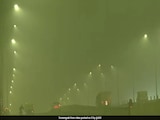A 7.0-magnitude earthquake shook the Pacific archipelago of Vanuatu late on Sunday, triggering a tsunami warning that was withdrawn later. The quake's epicentre was in the sea just off the northern bay of the largest island Espiritu Santo, some 400 kilometres (250 miles) north of the archipelago's capital Port Vila. The shallow quake hit around 11:30 pm local time and was 27 kilometres deep, according to the US Geological Survey (USGS), which placed it about 25 kilometres from the Espiritu Santo village of Port-Olry.
Why is Vanuatu prone to natural disasters?
The island nation regularly faces natural disasters, threatening its population of 280,000. A majority of these frightened villagers fled to higher ground after the tsunami alert was issued.
Vanuatu sits on the "Ring of Fire", an arc of seismic faults around the Pacific Ocean where earthquakes and volcanic eruptions are common, according to the United Nations.
The annual cyclone season, regular droughts and floods also make this country one of the world's most vulnerable to natural disasters, it added.
On its foreign travel advice page, the UK government says that the cyclone season in Vanuatu begins from November to May. Throughout this period there is a high risk of strong winds and heavy rains with associated flooding, landslides and road closures.
It further said that more than 2,000 seismic events are reported each year. While most of these events are small, larger earthquakes and tremors of over 5 magnitude do occur on regular basis.
The active volcanoes are located on the islands of Tanna, Ambae, Ambrym, Lopevi, Vanua Lava and Gaua.
The impact of climate change
Vanuatu is also facing a sea level rise and increasingly powerful cyclones that cripple its economy. The island nation has filed a draft UN resolution requesting an advisory from the International Court of Justice (ICJ) on the countries' legal obligation for climate change and consequence of causing harm.















